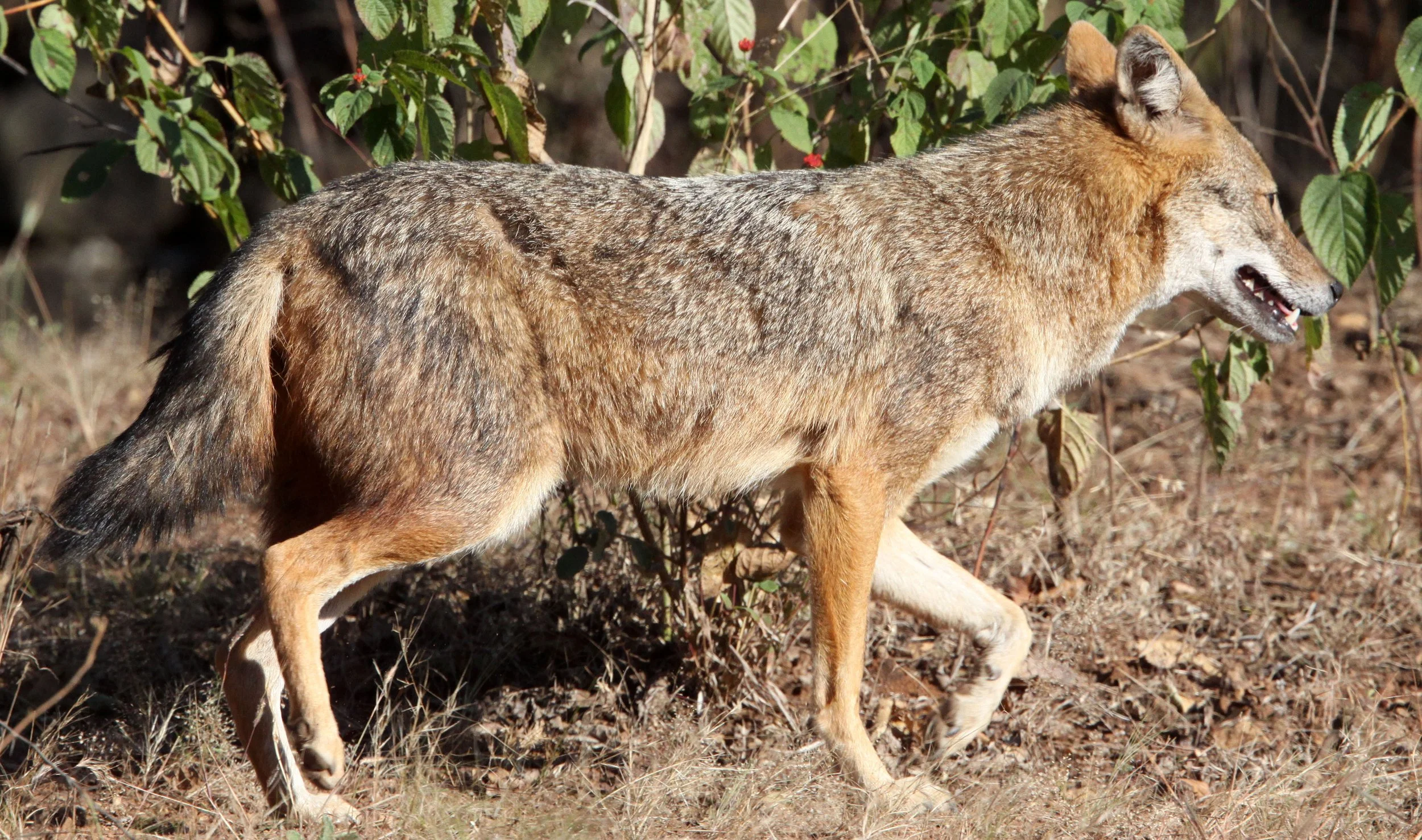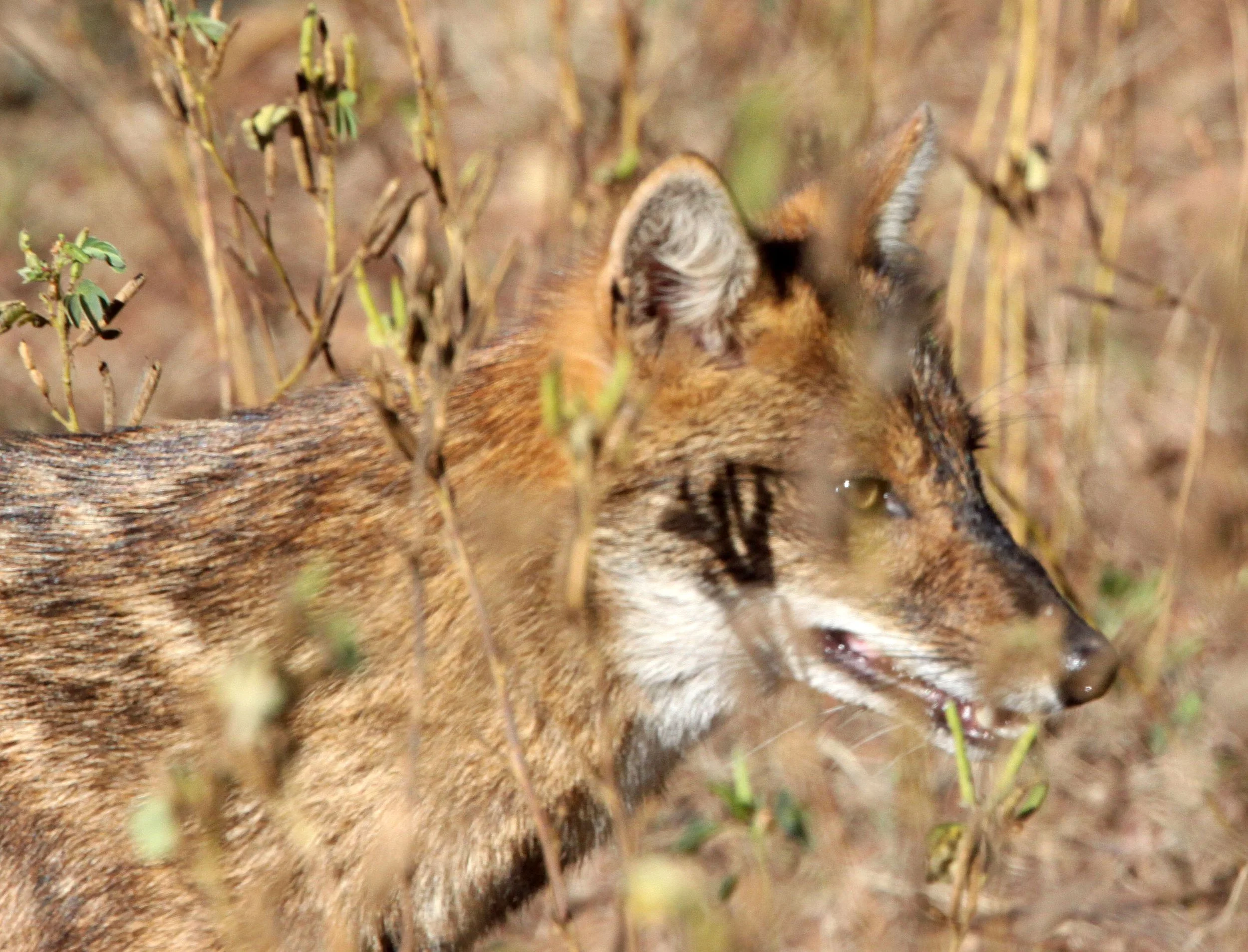
The golden jackal (Canis aureus) is a wolf-like canid that is native to Southeast Europe, Southwest Asia, South Asia, and regions of Southeast Asia. Compared with the Arabian wolf (Canis lupus arabs), which is the smallest gray wolf subspecies, the jackal is smaller and possesses shorter legs, a shorter tail, a more elongated torso, a less-prominent forehead, and a narrower and more pointed muzzle. The golden jackal's coat can vary in color from a pale creamy yellow in summer to a dark tawny beige in winter. It is listed as Least Concern on the IUCN Red List due to its widespread distribution and high density in areas with plenty of available food and optimum shelter.
Despite its name, the golden jackal is not closely related to the African black-backed jackal or side-striped jackal, which are part of the genus Lupulella. It is instead closer to wolves and coyotes. The ancestor of the golden jackal is believed to be the extinct Arno river dog that lived in southern Europe 1.9 million years ago. It is described as having been a small, jackal-like canine. Genetic studies indicate that the golden jackal expanded from India around 20,000 years ago, towards the end of the last Last Glacial Maximum. The oldest golden jackal fossil, found at the Ksar Akil rock shelter near Beirut, Lebanon, is 7,600 years old. The oldest golden jackal fossils in Europe were found in Greece and are 7,000 years old. There are seven subspecies of the golden jackal. It is capable of producing fertile hybrids with both the gray wolf and the African wolf. Jackal–dog hybrids called Sulimov dogs are in service at the Sheremetyevo Airport near Moscow, where they are deployed by the Russian airline Aeroflot for scent-detection.
The golden jackal is abundant in valleys and beside rivers and their tributaries, canals, lakes, and seashores, but rare in foothills and low mountains. It is a social species, the basic social unit of which consists of a breeding pair and any young offspring. It is very adaptable, with the ability to exploit food ranging from fruit and insects to small ungulates. It attacks domestic fowl and domestic mammals up to the size of domestic water buffalo calves. Its competitors are the red fox, steppe wolf, jungle cat, Caucasian wildcat, the raccoon in the Caucasus and in Central Asia, and the Asiatic wildcat. It is expanding beyond its native grounds in Southeast Europe into Central and Northeast Europe into areas where there are few or no wolves.
The below galleries have images of the various subspecies I have encountered over the years:
Indochinese Golden Jackal (Canis aureus cruesemanni) - seen in many locations in Thailand

Canis aureus cruesemanni - Indochinese Golden Jackal - Khao Yai NP Thailand



















Canis aureus cruesemanni - Indochinese Golden Jackal - Khao Pang Ma Gaur Viewing Area







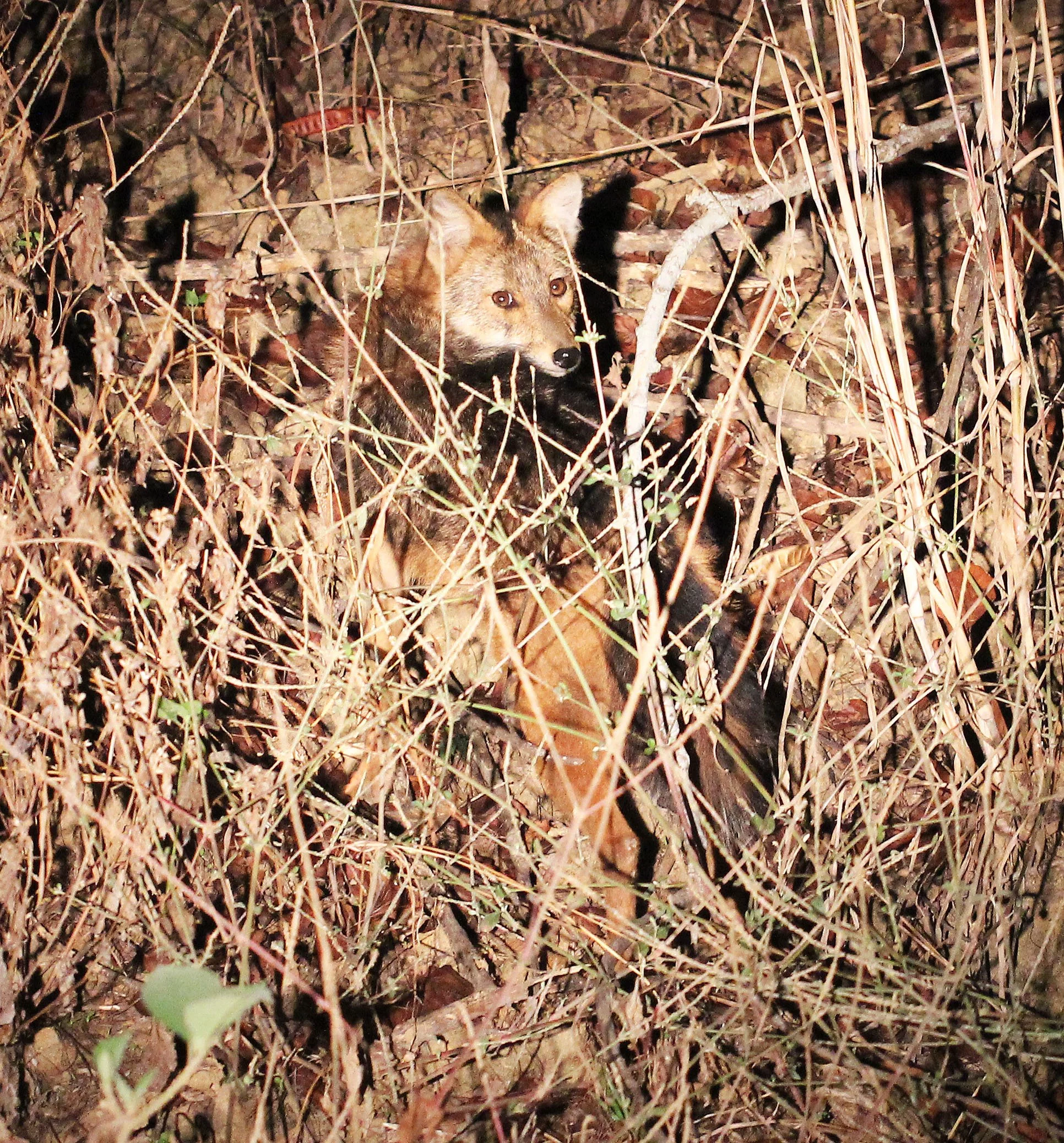












Canis aureus cruesemanni - Indochinese Golden Jackal - Huai Kha Khaeng NWS







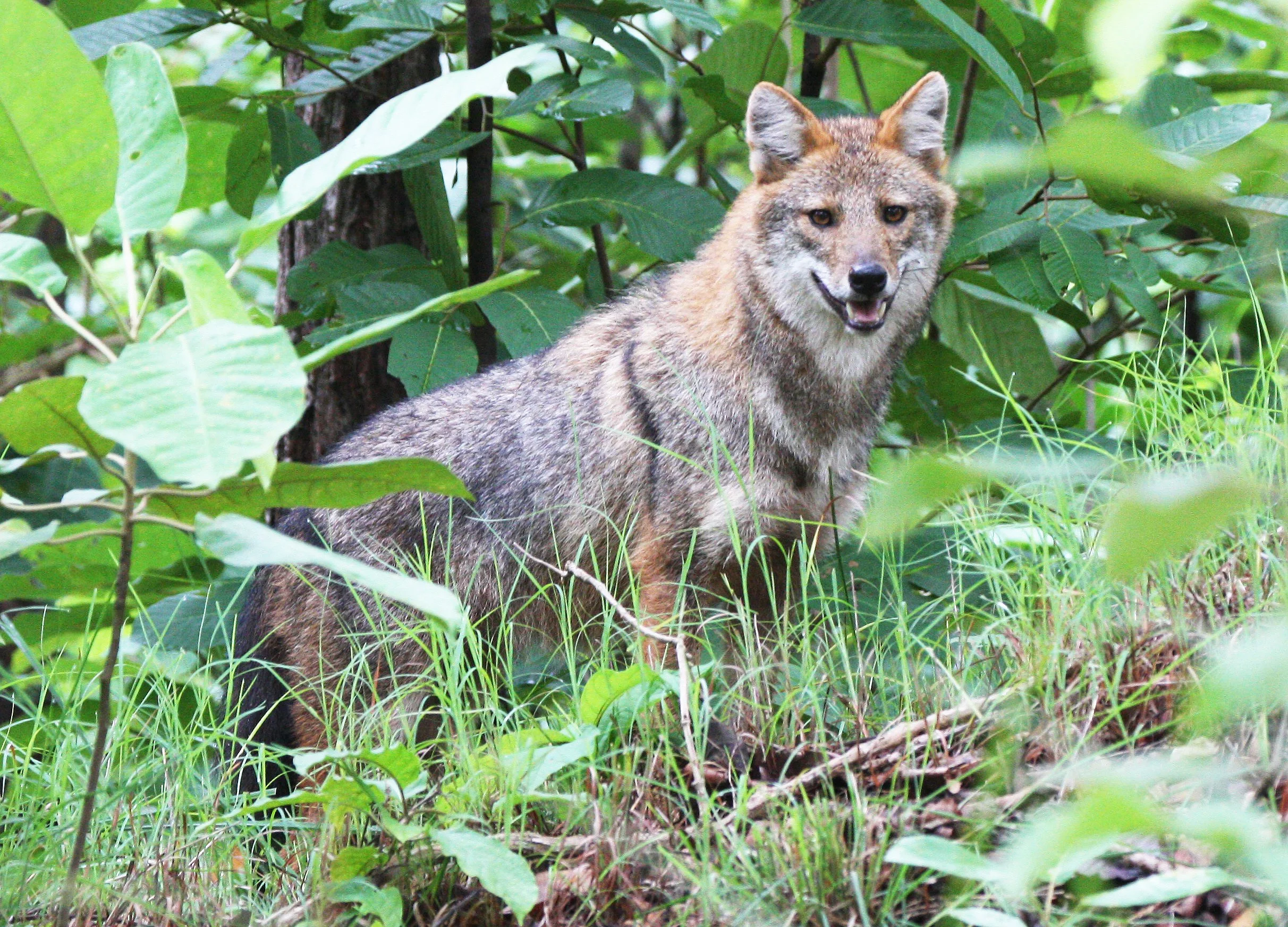

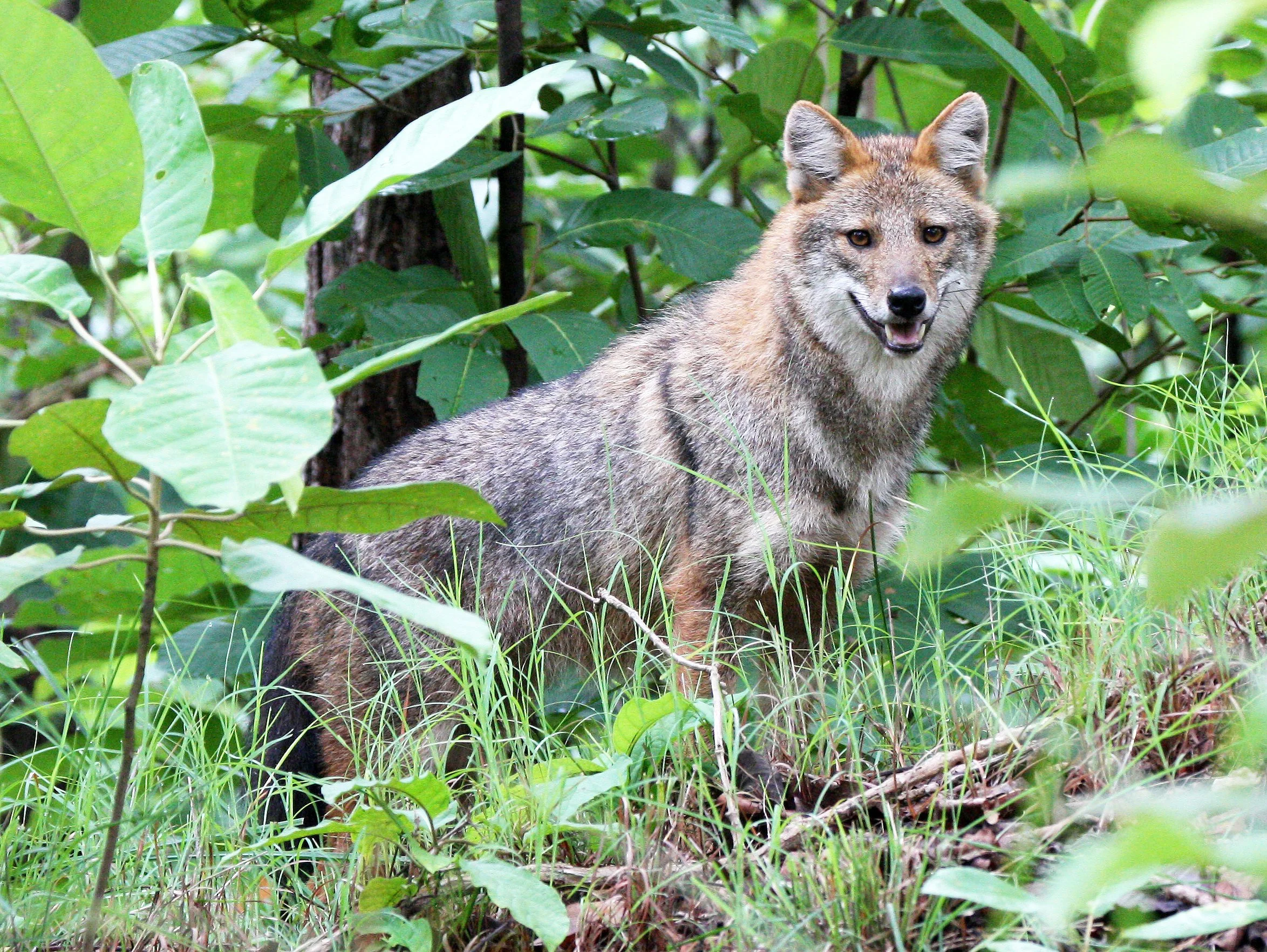





Canis aureus cruesemanni - Indochinese Golden Jackal - Khao Yai NP Thailand July 2024














Sri Lankan Golden Jackal (Canis aureus naria) - seen in many locations in Sri Lanka, mainly Yala National Park











































Indian Golden Jackal (Canis aureus indicus) - seen in many locations in India
























Persian Golden Jackal (Canis aureus aureus) - Seen in Gujarat, India. Subspecies needs verification








